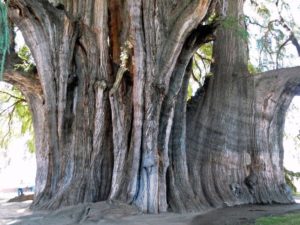Wonder
Jōmon Sugi (Jomon Sugi)
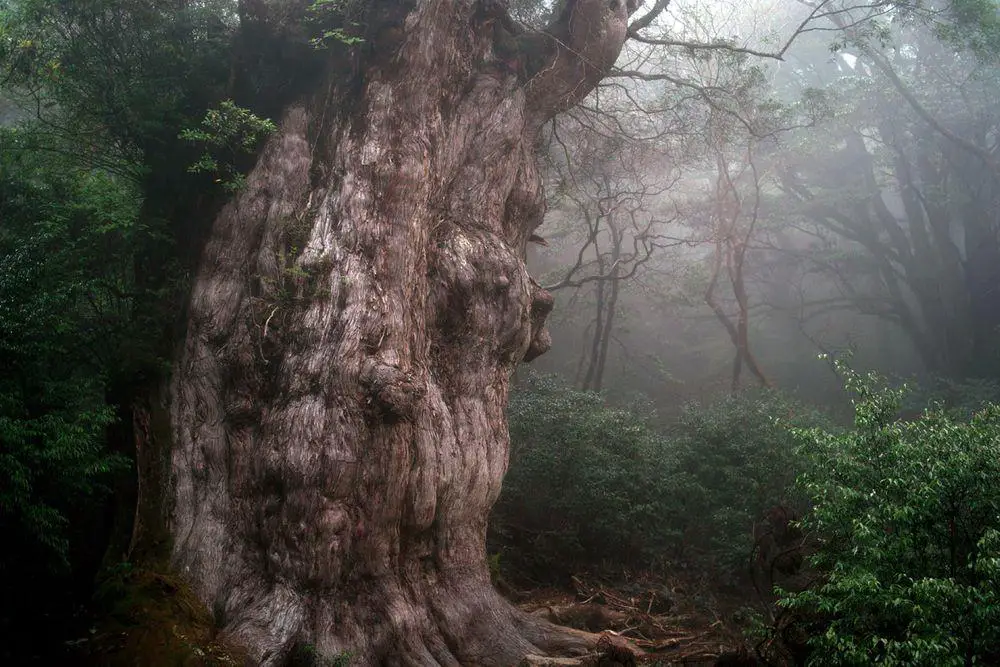
 In short
In short
Japan is rich with giant trees. The largest is Jomon Sugi – giant cryptomeria in the mountains of the small Yakushima (Yaku Island). It is estimated that this tree is more than 3,000 years old although some believe that it could be even 7,200 years old.
 42.5%
42.5%
GPS coordinates
Location, address
Name in Japanese
Species
Height
Circumference
Volume
UNESCO World Heritage status
Map of the site
If you see this after your page is loaded completely, leafletJS files are missing.
 In detail
In detail
Fairy tale forest
Yakushima in some aspects is like a small version of Japan: central part of the island is "left" for pristine nature while the rims are densely inhabited by hard-working people, who are developing ambitious high-tech projects, e.g. hydrogen fuel cells for the future "Honda" vehicles.
Forest in the central part of the island is unique. Here grow 1,900 species of plants, at least 94 of these are found only here. Plantlife has evolved on nutrient-poor soil, often there is just a thin layer of soil on hard granite. Altitude zones of vegetation are well expressed: tourists can enjoy subtropical vegetation at the sea level, then comes the zone of laurel forest, the zone of cryptomeria forest, and finally – alpine vegetation around the 1,925 m high summit of Miyanouradake – the tallest mountain in this part of Japan.
Especially impressive is the cryptomeria forest at the height of some 800 – 1,600 m above sea level. This forest is covered in eternal mist, precipitation here may reach 10,000 mm per year. Yakushima is the rainiest place in Japan.
Fog, giant trees, and eerie green light create a feeling of fairy tale forest: and this has been used with much success. Depiction of Yakushima forest plays a significant role in one of the greatest anime movies: "Princess Mononoke", it served as an inspiration for the forest of spirits.
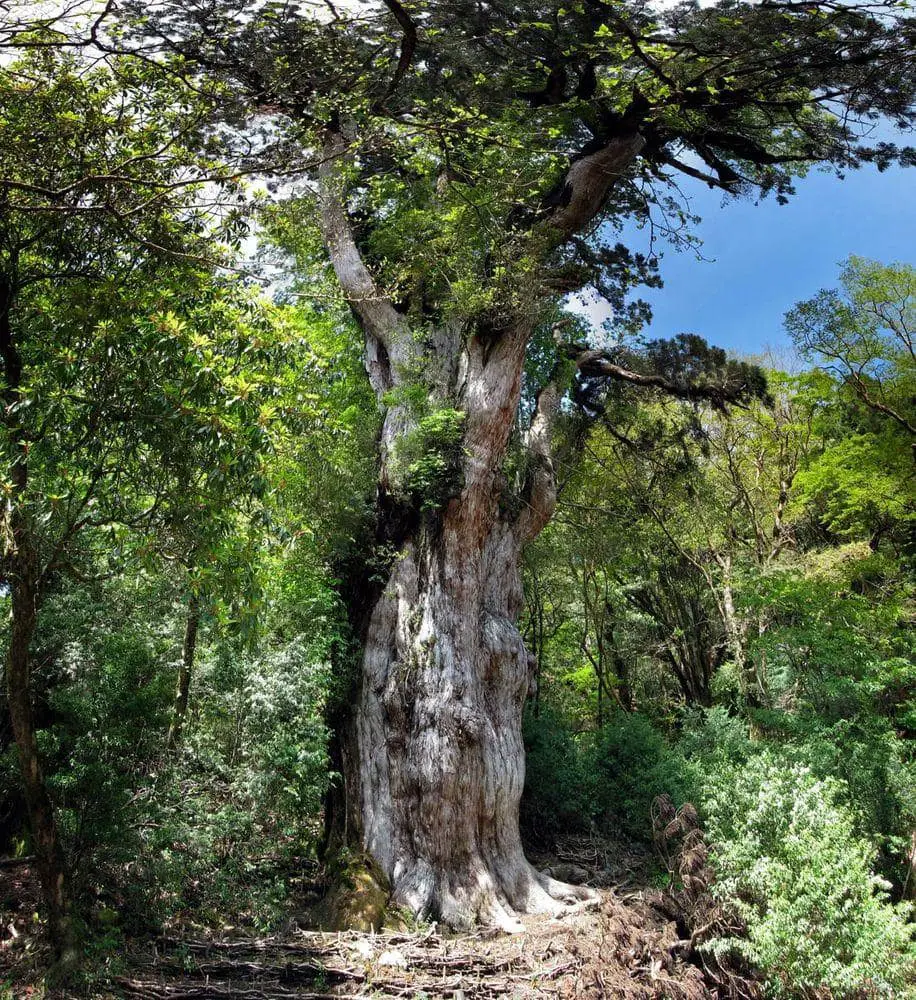
Yakusugi
Largest trees in this moss-covered forest are millennia-old cryptomerias. Cryptomeria (sugi) is a genus of conifers, which includes just one species – Cryptomeria japonica – beautiful, noble tree, which, reportedly, can grow up to 70 m tall. This tree is endemic to Japan, although it is cultivated in China for millennia.
Yakushima happens to have some of the best sugi trees. Thanks to constant moisture trees have much resin and wood is resistant to rot. For centuries the island has provided top-quality wood for the construction of temples and ships. Thus, one of the largest known cryptomerias was cut in 1586 and its stump stands in the forest up to this day. It is named Wilson stump after an English plant collector, its circumference at the base is 32 m, diameter at the height of chest – 4.39 m. Now it is hollow and groups of tourists may enter it.
Cryptomerias which are older than 1,000 years, are named yakusugi. Many yakusugi have their own names, e.g. Kigen Sugi – a 2,500 – 3,000 years old giant with a circumference of 13.3 m. Some more yakusugi are Daio Sugi (circumference – 11.1 m), Ryuujin Sugi (11.0 m), Meoto Sugi (10,9 m, two trees have grown together with a small stream flowing between them), Kawakami Sugi, Buddha Sugi, Futago Sugi, Sennen Sugi and many more.
The largest tree in Japan
Jomon Sugi – the largest tree of this fairy tale forest – most likely was known to locals for centuries. Wider society learned about this tree from publications in 1968, after Teiji Iwakawa found the tree in 1966.
Initially the tree was named Ohiwa Sugi – but soon after it was renamed to Jomon Sugi. Jōmon ("rope patterned") symbolically links the age of this tree to the prehistoric times of Japan – Jōmon period, which in turn was named after the cord-marks, characteristic for the ceramics of Japanese prehistory.
Tourists rushed to the island to see this beautiful tree in a fairy tale forest. In fact, the tree was one of the major reasons to protect the unique forest of Yaku Island, which in 1993 was included in the UNESCO World Heritage list.
Two nature routes – Kusugawa Hiking Path and the Arakawa Trail – pass now along the tree. The walk requires 4 – 5 hours from the nearest road. Tourists are not allowed to walk at the tree: there is built an observation deck some 15 m from it in 1996. Most people come in May-August, but experienced travelers advise to come here in the late autumn when one can feel more intimate with this fabulous forest.
Size
At the breast height the tree has a circumference of 16.4 m (some earlier sources give 16.2 m but it is possible that the tree has grown a bit larger now). It is 25.3 m high and has a volume of some 300 m³. There are taller and stouter trees in Japan, but Jomon Sugi is the largest one.
Age
Most likely Jomon Sugi is the oldest tree in the forest and one of the oldest in the world. There are different estimates of its age: between 2,170 and 7,200 years. Scientific analysis shows that it is certainly older than 2,000 years and, most likely – older than 3,000 years. The center of the trunk has rotten, thus we can not find the exact age by counting tree rings. It cannot be older than 6,3 – 7,3 thousand years when catastrophic eruption eliminated most of the vegetation in this area.
Those who have seen Jomon Sugi in nature attest, that the tree on images looks very small if compared to real-life experience. No images can transfer the magnificence of this great monument of nature.
Jōmon Sugi is included in the following list:
 Linked articles
Linked articles
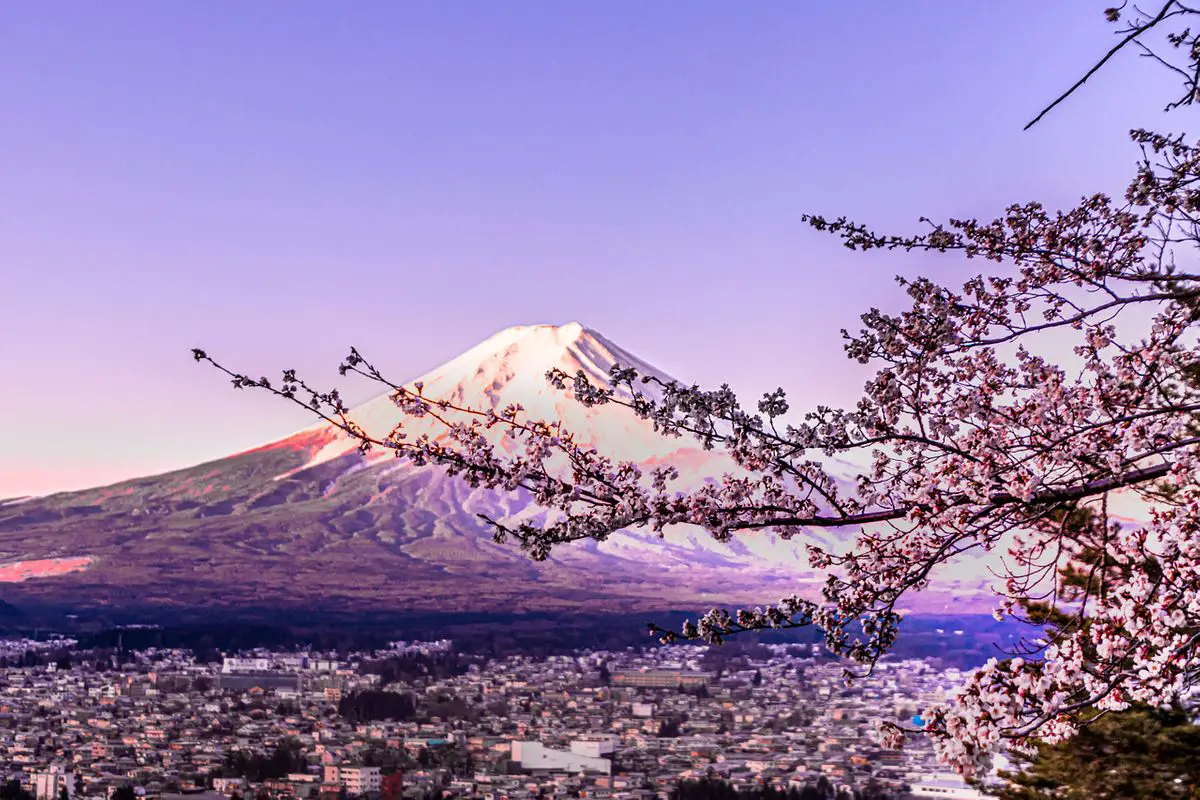
Wonders of Japan
There are few countries in the world with such a distinct and rich cultural heritage as Japan. One of the greatest achievements of Japanese culture is that the Japanese have reached certain harmony with nature and every notable natural landmark in the country is part of Japanese culture.

Trees
The category includes some of the most impressive and interesting separate trees in the world. The total number of tree species in the world still is a wild guess – maybe 10,000 and maybe 100,000 but most likely somewhere in between. Every month there are reported new tree species from the whole world, including Western Europe.
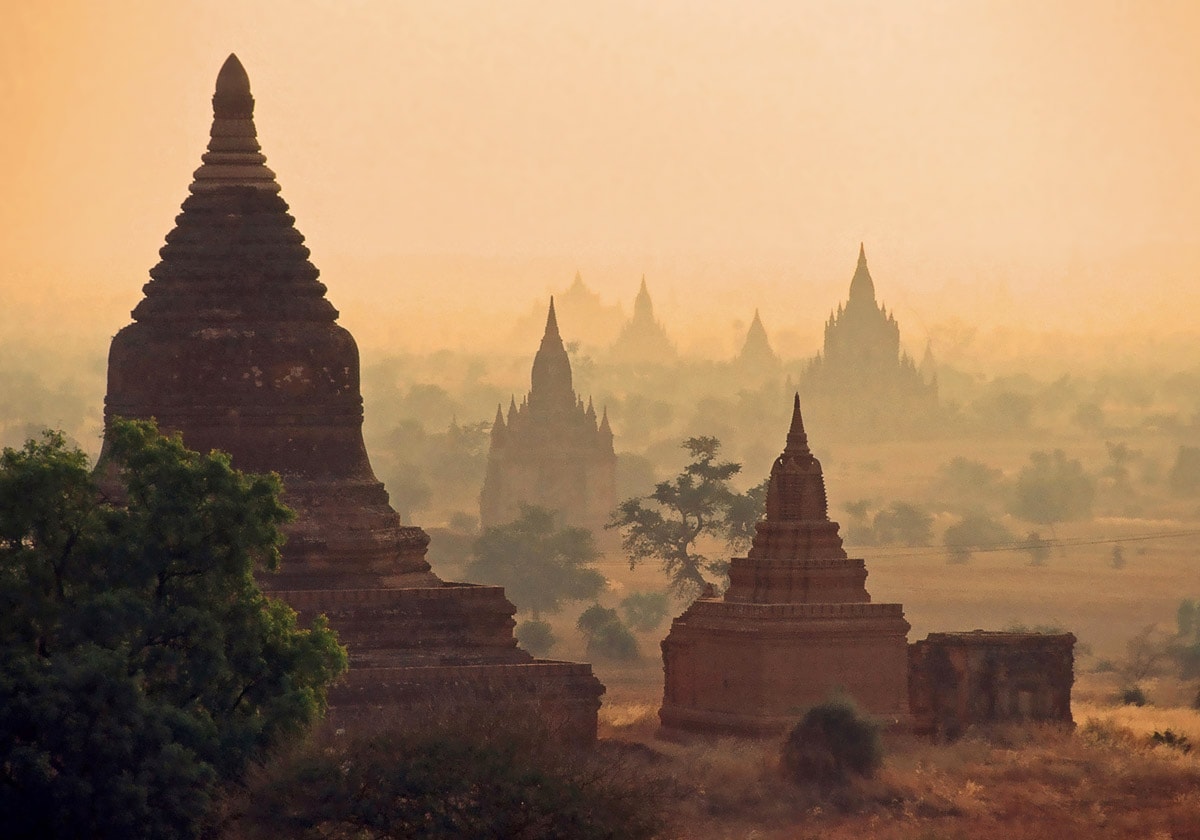
Wonders of Asia
Any other continent (and part of the world) seems small if compared to Asia. This refers also to natural and man-made heritage: in Asia are not just thousands of great landmarks, there are found landmarks created by thousands of diverse cultures from ancient Phoenicians to the mysterious small people in the Philippines and eastern islands of Indonesia.
 Recommended books
Recommended books
The Ryukyu Kingdom: Cornerstone of East Asia
This English translation of a key work by one of Okinawa’s most respected historians, Mamoru Akamine, provides a compelling new picture of the role played by the Ryukyu Kingdom in the history of East Asia. Okinawa Island, from which the present-day Japanese prefecture derives its name, is the largest of the Ryukyu Islands, an archipelago that stretches between Japan and Taiwan.
Okinawa and the Ryukyu Islands
Travel to the most inspiring tropical islands on the planet! Everything you need is in this one convenient Okinawa travel guide—including a large pull-out map.

